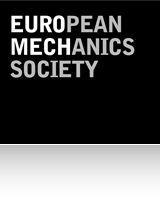581 – Dynamics of concentrated vortices
Chairperson:
Prof. Sergey Alekseenko
Director of Kutateladze Institute of Thermophysics, SB RAS
1 Lavrentyev Ave
Novosibirsk, 630090, Russia
phone: +7 (383) 330 70 50
fax: +7 (383) 330 84 80
email: aleks@itp.nsc.ru
Co-chairperson
Prof. Jens N. Sørensen
Head of FM section
Department of DTU Wind Energy
Technical University of Denmark (DTU), Building 403
DK-2800 Lyngby, Denmark
phone: +45 4525 4314; +45 3880 5850
email: jns@mek.dtu.dk
Prof. Valery Okulov
Department of DTU Wind Energy
Technical University of Denmark (DTU)
Building 403
DK-2800 Lyngby, Denmark
phone: +45 4525 4312
email: vaok@dtu.dk
Vortex flows of different types occur in nature and technology. Many of them can be interpreted as concentrated vortices. Undoubtedly, one of the most common types of concentrated vortices is a columnar vortex, or filament-type vortex. Alternatively, these vortices are also termed the elongate concentrated vortices. The concept of vortex filament is one of the fundamental concepts of fluid dynamics. The vortex filament (point vortex) is a simple and convenient model for describing real vortices. In reality, the concentrated vortices of the vortex filament class almost never have a rectilinear axis due to different instabilities and the capacity of the vortex cores to be a waveguide. The disturbed states are characterized by a wide spectrum of various modes, such as axisymmetric, bending, and others. At the same time the most typical forms of disturbances are those with a helical shape. The key mechanism of propagation of these disturbances is related to the self-induced motion. This mechanism is also responsible for the motion of vortex rings and propagation of nonlinear wave packets, known as a vortex soliton (or Hasimoto soliton) described by the cubic Schrödinger equation. Existence of solid surfaces, other vortices and external fields have a strong impact on the behavior of a concentrated vortex. The concept of vortex filaments (quantum vortices) was especially fruitful in developing the Theory of Turbulence in Superfliud Helium.
Indeed, a vortex breakdown is the most striking and fascinating phenomenon. Vortex breakdown brings a radical flow restructuring, and it is significant for transfer processes and performance of a vortex type industrial heat- and mass-transfer apparatuses. The problem of vortex breakdown description has been one of the main incentives for the study of concentrated vortex stability.
Concentrated vortices play an important (and often dominant) role in technical applications. For example, the generation of precessing vortex ropes behind the hydroturbine runner may induce high pressure pulsations and result in catastrophic consequences. The complex vortex structures were discovered in the Ranque-Hilsh vortex tube. Non-stationary vortex structures are significant for combustion processes in vortex burners. The formation of vortex ropes and their breakdown in flow over a delta wing influence the lift force and wing control. The key mechanism of heat transfer enhancement on the surface with dimples lies in the formation of elongate concentrated vortices similar to “tornado-like structures”.
As for the natural phenomenon of a tornado and small-scale atmospheric vortices, these are revealing examples related to concentrated vortices. The large-scale phenomena like oceanic vortices or atmospheric cyclones (anti-cyclones) also belong to the category of concentrated vortices. However, their scale is comparable (or larger) to the layer thickness of the atmosphere/ocean, so their description requires a special approach.
The purpose of this Colloquium is to gather researchers from different communities who are working on the problems, related to the concentrated vortices. It is hoped that exposing to each other the ideas regarding modeling and experimenting with vortex flows, the participants will find more common ground. This will add to a progress in general understanding of vortex instabilities and vortex breakdown phenomena in different technical devices. In particular, bringing together expertise from several disciplines, and from both theoretical and experimental background, will help us to distinguish mechanisms, inherent to concentrated vortices phenomena.
